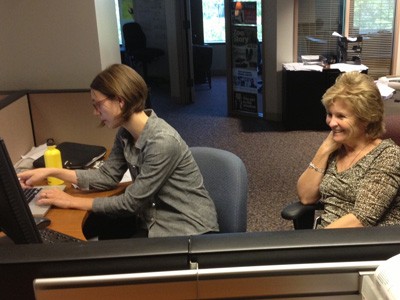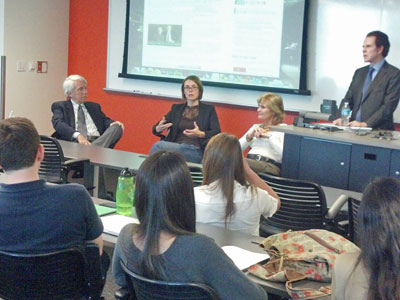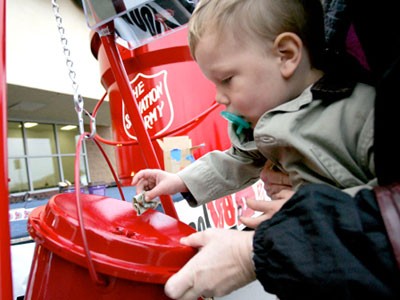
Barlett & Steele Gold Award Winners
“America’s Worst Charities”
by Kris Hundley and Kendall Taggart
Tampa Bay Times and The Center for Investigative Reporting
How would you identify the worst charities among the roughly 1.6 million tax-exempt organizations in the United States?
To answer that question, the Tampa Bay Times and The Center for Investigative Reporting focused on one widely recognized red flag: Long-term reliance on high-cost, for-profit professional fundraisers.
We traveled twice to Kansas City to research and interview a lawyer who represents more fundraisers and charities than any other attorney in the country. We spent two days at the Iowa attorney general’s office, digging through 30 boxes of documents seized from a shuttered boiler room.We spent a year gathering data, consulting experts, chasing down reluctant telemarketers and charity executives. Our investigation took us from a telemarketer’s boiler room in New Jersey to a cancer survivor’s home in Tennessee to a state regulator’s files in Sacramento.
We confronted a long-time telemarketer in south Florida who started a charity so his son could have a job. He spent 15 minutes refusing to talk to us, then five hours explaining his industry.

Our efforts led to the publication of a list of America’s 50 worst charities in June 2013 and several follow-up stories.
Using three years of IRS data, provided by the charity tracker GuideStar, we learned that even the occasional use of outside fundraisers was limited to a small fraction – about 4 percent – of all nonprofits.
In order to identify the outliers, we turned to another source of data: state charity regulators. About a dozen states require professional solicitors to file annual reports itemizing how much they raised for each charity in the previous year, how much they retained and how much the charity received.
We standardized the data from a decade of these reports filed by professional solicitors in California, Florida and New York. Because these are the largest states that require such filings, this gave us the most comprehensive picture of the finances of charities soliciting nationwide.
Our approach enabled us to see fundraising campaigns across America because these states capture national data from any charity that raises even a single dollar in their jurisdiction. These three states combined represent roughly 25 percent of the U.S. population.
We then zeroed in on charities that consistently kept less than 33 cents of every dollar donated. Watchdogs generally flag charities as wasteful if they keep less than 65 cents of every dollar raised.
One or two costly fundraising campaigns were not enough to make the list. Charities had to pay fundraisers the lion’s share of money raised in at least 75 percent of all campaigns over the years.

In addition, the Times and CIR excluded charities that ran fewer than five campaigns, got half their cash revenue from other sources or had revenue under $200,000.
The 50 charities with the highest spending on professional fundraisers over the past decade were labeled the nation’s worst.
Relying on each charity’s IRS filings during that period, we calculated what the charity reported spending on professional fundraisers each year, compared to the total amount solicitors raised. These totals were reported on our web site, along with links to the charities’ IRS filings.
The data had limitations which led us to suspect that our count of wasteful charities was conservative.
After facing criticism for high fundraising costs year after year, charities and fundraisers have learned how to hide the costs of telemarketing and direct mail. Some have obscured costs by reporting mailing expenses and other fees separately. Others run their own telemarketing operations in-house. Some of the charities’ IRS filings were incomplete or had not been filed. Others contained obvious errors that sometimes could not be clarified.
The Times and CIR had three experts review the methodology for identifying the 50 worst charities. All of them, including Chuck McLean, vice president of research for Guidestar; Robert Tigner, general counsel of the Association of Direct Response Fundraising Counsel; and Putnam Barber, a nonprofit expert at the University of Washington, said the methodology was sound.
In addition to identifying the nation’s worst charities, the Times and CIR made public records requests to officials in all 50 states and compiled the first nationwide database of state regulatory actions against charities and their professional fundraisers. The data, available at tampabay.com/charity, contains some 8,000 actions from more than 35 states.
The time-consuming task of compiling and analyzing the data provided the framework for our series. But it was the people behind those charities and telemarketing companies that brought the series to life.
Financial filings, court records and interviews with former employees and business associates helped us unravel the tale of the Kids Wish Network founder who paid himself millions to do marketing for his charity both while in office and after he retired.
We noticed several different telemarketing companies had reported using a similar address. The mysterious connections among seemingly unrelated telemarketing companies led to the story about a fundraising consultant who has been banned in one state but remains active behind the scenes throughout the rest of the country, illustrating the limits of regulators’ powers.
And we found five cancer charities were linked to one family through a tangled family tree compiled through public records and in-person interviews. The oldest of these charities, Cancer Fund of America, tells donors in telemarketing scripts that it helps “alleviate the great financial burden” on cancer patients. By knocking on doors in Knoxville, we found a woman whose husband received help from Cancer Fund, but it wasn’t cash, It was a boxful of useless junk.
There’s a common misperception that telemarketing and direct mail fundraisers are minor-league efforts, resulting in $10 and $20 pledges from well-meaning but ill-informed donors. By looking at a decade’s worth of giving to the 50 worst charities, we proved it is a billion-dollar industry fueled by generosity at one end and greed at the other.
FIVE TIPS:
1) History matters: The hook for our story was compiling 10 years’ worth of fundraising data, then challenging the excuses charities gave every year for their high costs. By going back in time, we showed that high fundraising costs were not an aberration, they were a way of life for these 50 charities.
2) Trust your instincts for outrage: Industry insiders will sometimes downplay facts that a regular reader will find outrageous, like charities giving 90 percent of the money raised to for-profit telemarketers. If it shocks you, it will shock the average reader.
3) Partner if possible: Having a colleague on a long-term project is invaluable. You can pull each other out of the inevitable rabbit holes (or keep working while they’re wandering). You can commiserate on bad days, celebrate the breakthroughs and drive each other nuts.
4) Write early and often: We prepared a spreadsheet with our major findings early in the process. Across one row, we listed three to five findings and underneath we filled each column with evidence we collected to support our findings. While these shifted over time as our reporting continued, the spreadsheet helped us track the information we gathered in a way that made writing the stories much easier. It also helped us identify reporting holes.
5) Outline the regulatory framework for any topic you’re covering: When it became clear to us that charities were primarily regulated at the state level, the next logical question was: Are bad actors continuing to operate elsewhere after they’ve been disciplined or banned in one state? We found at least a dozen solicitation companies and charities that were forced out of one state only to continue raising donations elsewhere. Key questions to ask about the regulatory framework: What cases are they most proud of? What are the limits of their authority?









